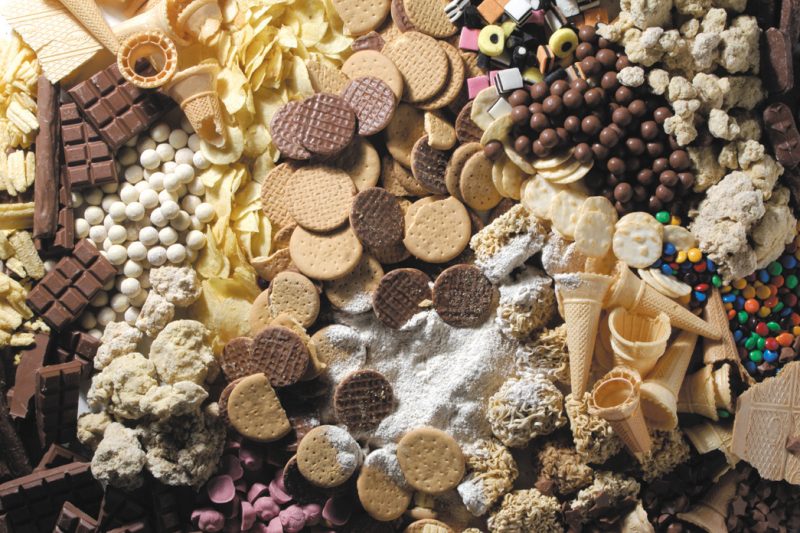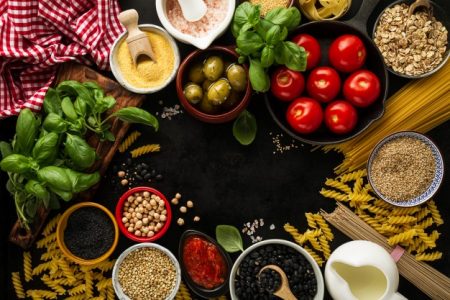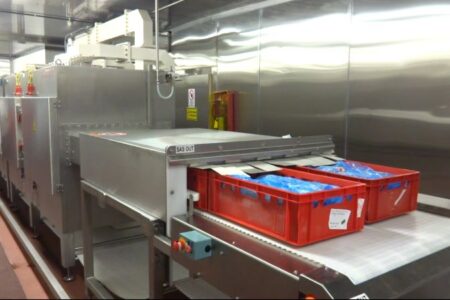Recycling packaging… and the food?

Alongside packaging waste, the creation and poor management of surplus food has been identified as a vast problem throughout Europe. Paul Featherstone, group director at SugaRich, investigates.
With more and more European organisations striving to improve their resourcefulness and reduce the adverse impact they have on the environment – and their bottom lines – the principles of the waste hierarchy are being increasingly adopted. But to what extent do food and drink professionals realise that they can recycle their food as well as their packaging?
In July, the European Commission announced new plans to recycle 80 per cent of packaging waste by 2030, with the landfilling of recyclable materials – including plastics, paper, metals and glass – to be banned by 2025. These ever more stringent targets are a reflection of the EU’s goals to become a more circular and self sufficient society with greater resource security, environmental protection and, ultimately, national competitiveness.
And there can be no disputing that food and drink manufacturers – not to mention distributors and retailers – are sitting up and paying attention to these objectives. Yes, there is still some work to be done. However, the ongoing development of more compliant waste management practices not only upholds the corporate social responsibility of these organisations, but it also helps to safeguard the world in which we live and saves these organisations money.
Food for thought
Yet it must be acknowledged that packaging ‘waste’ is not the only issue in this sector. The creation and poor management of surplus food has been identified as a vast problem throughout Europe, and indeed worldwide.
In April, the House of Lords EU Committee reported that at least 90 million tonnes of food is unutilised across the EU every year. [1] To put this into perspective, 15 million tonnes of UK food waste per annum is said to equate to a financial loss to business of at least £5 billion every year. Parliament also highlighted that the carbon impact of food waste worldwide is equivalent to twice the global greenhouse gas emissions of all road transportation in the USA.
It is therefore imperative that urgent action is taken. After all, the target to halve edible food waste by 2020 is looming, plus the UK’s ultimate goal of zero food waste to landfill should not just be a pipedream. But do food and drink manufacturers understand the actions they can take to tackle food waste?
Adopting the waste hierarchy
Under the principles of the waste hierarchy – a prioritised programme that encourages the most appropriate use of resources – the greatest level of effort should be made to try and reduce the level of surplus food created in the first place. Prevention of food waste at source means valuable materials are retained and costly waste management exercises avoided.
In the case of food manufacturing, steps should be taken to assess the root cause of waste, whether due to human error or a technological fault. Technology now exists, for example, to monitor the point, or points, in a production process where surplus food is created. Effectively a management information system, such technology weighs food deposited into various receptacles along a production line, in almost real time. If operatives are able to key in additional elements of detail about the source of the waste, computer analysis will then help the manufacturer process this data and create reports according to specific machines, production lines, products and time periods.
Of course there may still be inevitable by-products and a proportion of material that cannot be placed on the market for human consumption, perhaps as a result of trial runs. However, the investigative monitoring described above enables food manufacturers to clearly determine where waste is produced, rather than relying on assumptions or failing to uncover the problem in the first place. Management time, effort and money can then be carefully invested to drive process improvements and hopefully avoid production errors, overcooking and incorrect weights and sizes, which would otherwise lead to waste. The focus is on getting it right first time.
Retaining the nutrients
If the creation of waste is unavoidable, the waste hierarchy prioritises reuse. So, if surplus food is still safe for human consumption, manufacturers and retailers should work with food banks and charities to help feed the hungry. Where this is not possible, it is important to consider how the food can be recycled. Not all manufacturers and retailers know that methodologies exist to safely harness the value of residual food so it does not become waste.
Starch-rich foodstuffs including biscuits, bread, cakes, crisps, confectionery and breakfast cereals, for example, can be recovered, reprocessed and converted into high quality animal feeds. This process is subject to strict legislation and quality control mechanisms, but essentially it enables valuable nutrients to be retained within the feed/food network, not lost. Blended to suit farmers’ specific requirements, such feeds improve the quality of livestock products that people subsequently eat, hence closing the food chain loop.
Packaging materials can even be extracted for recycling, which further heightens the total efficacy of this approach. The packaging is mechanically removed through a process of graduated particle size reduction combined with a number of sieving stages and air-vacuum extraction based on specific gravity variance.
Consider all options
Because composting and energy recovery receive such attention in the media, not all manufacturers realise alternative options exist for their surplus food. What’s more, government incentives are being offered to support anaerobic digestion (AD) projects, for example, which often wrongly promote the pursuance of this option, rather than a more hierarchically compliant route.
AD – essentially the four-stage natural breakdown of organic matter – does have a role to play. It creates methane, which has the potential to be used as vehicle fuel; and/or biogas, which can be burned to produce heat and electricity; digestate, which can be used as a fertiliser; and water. But it should only be considered as an option when all earlier opportunities in the hierarchy have been exhausted. In reality – in the circular economy – it is marginally better than disposal, which it goes without saying is absolutely the last resort.
If as an industry we are to truly commit to the EU’s resource agenda, then waste hierarchy compliance is essential. It is also important to realise that food, just like packaging materials, can become a part of the circular phenomenon, which brings with it some very exciting opportunities indeed.
References
[1] Counting the Cost of Food Waste: EU Food Waste Prevention, House of Lords, European Union Committee. Printed 18 March 2014, published 6 April 2014.



